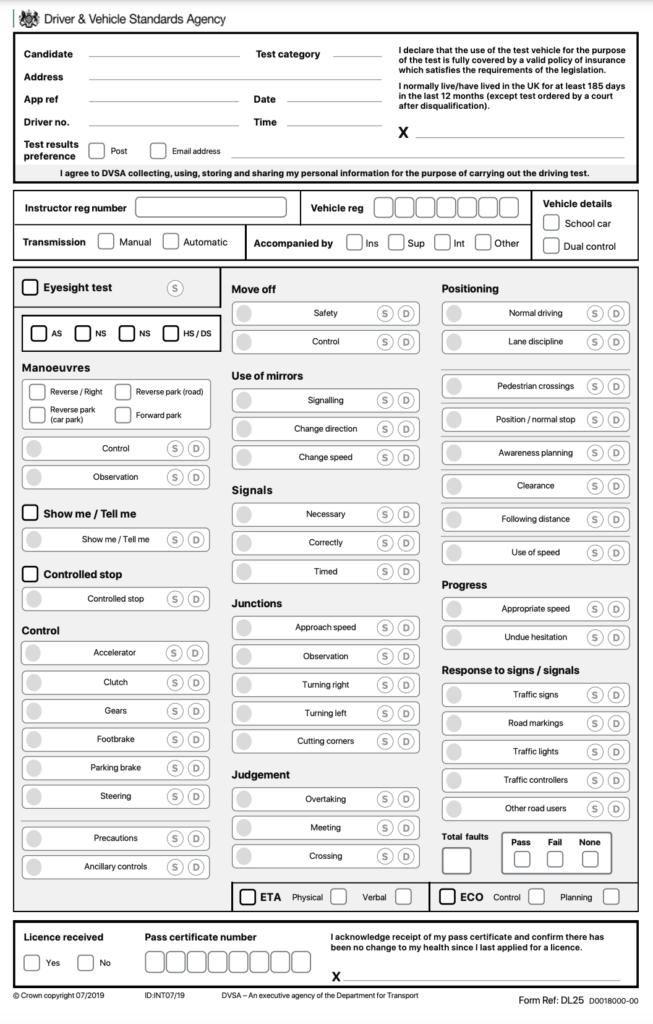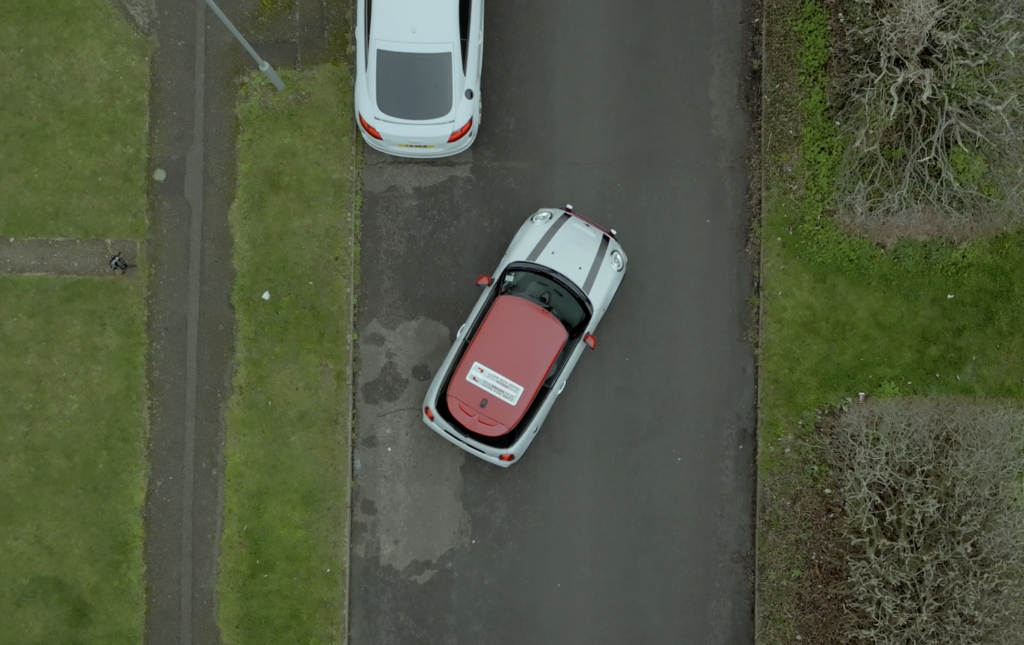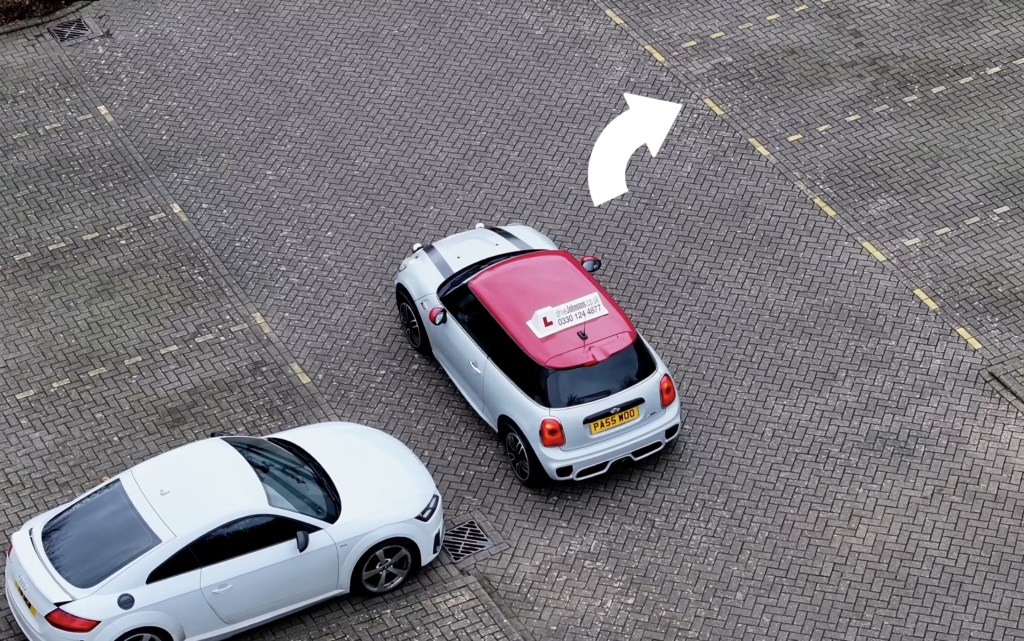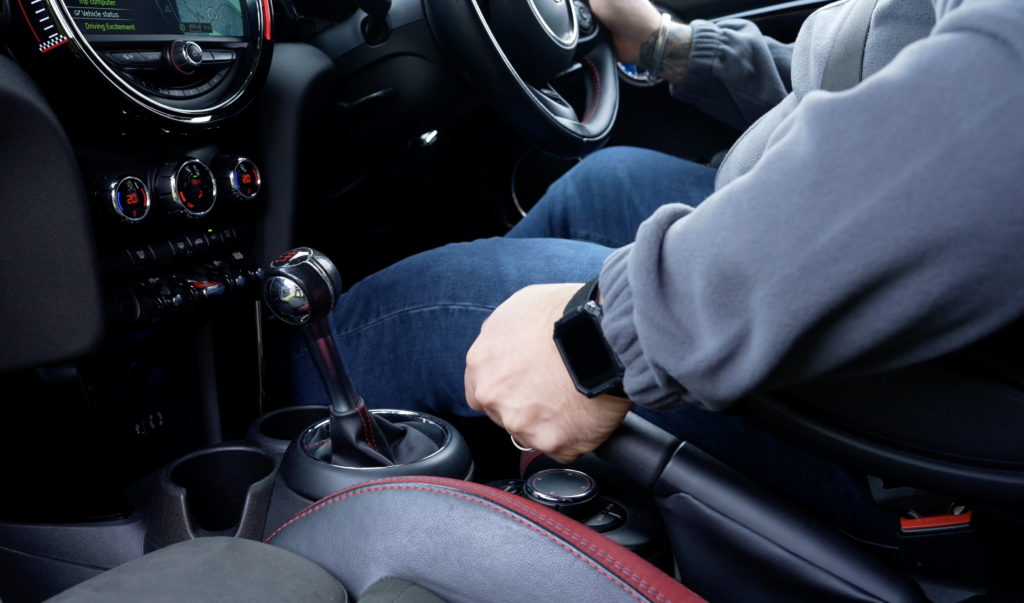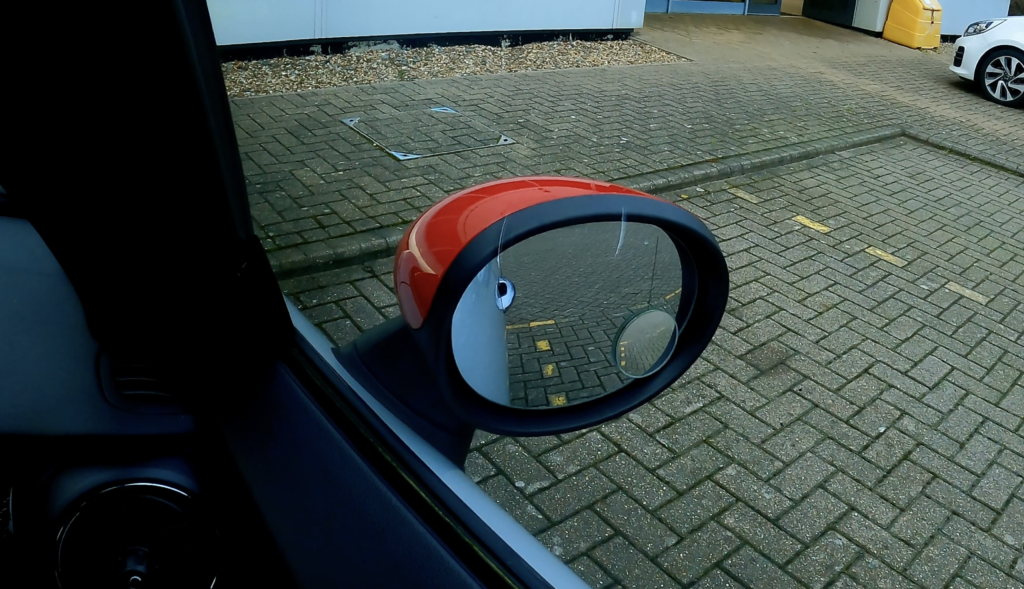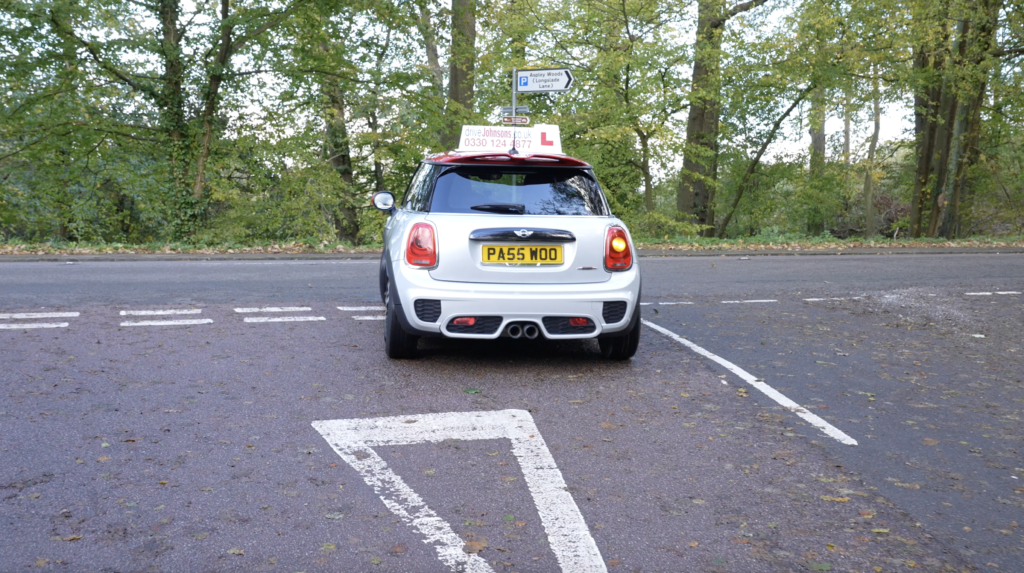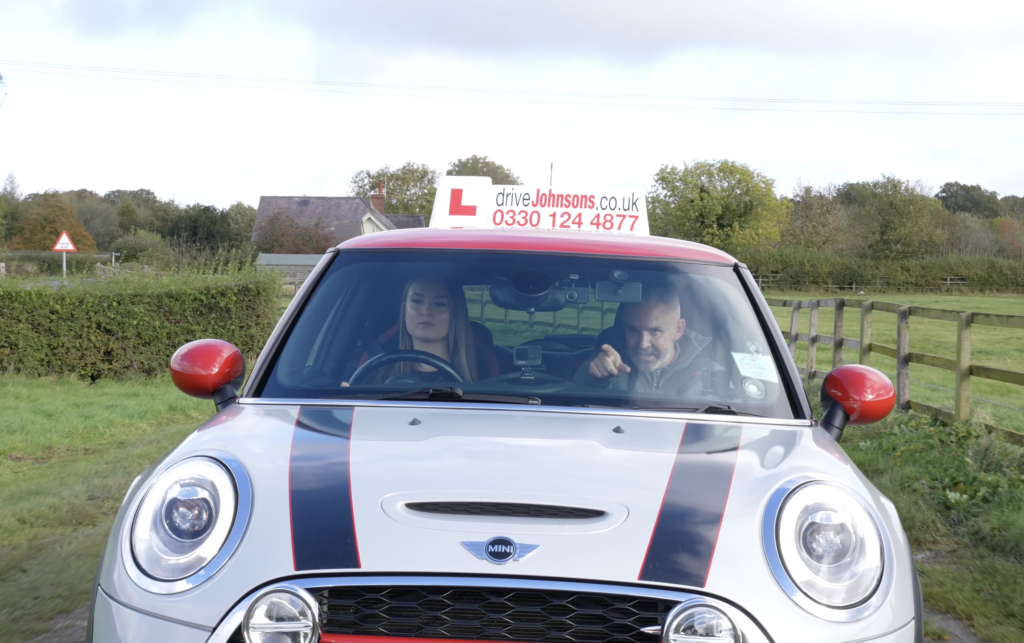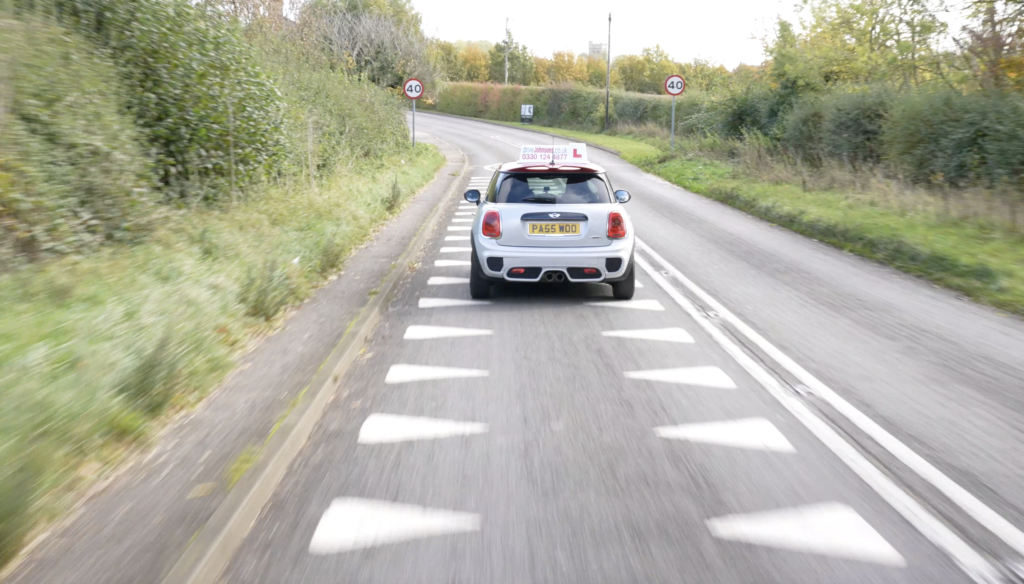Driving test examiners can seem pretty intimidating as they sit next to you on your test with an inexplicable report, making notes, and evaluating how well you’re doing. You might find a whole load of questions running through your head: what is that report they are completing? What are they writing? What are you being marked on? This is where our guide to the UK driving test marking sheet comes in.
We’ve been through and broken down every section of the driving test marking sheet, taking the mystery out of it and answering all your questions. We give you everything you need to know about how the examiner is going to mark you on your test. Familiarise yourself with the below and you’ll know exactly what they’re looking for to truly impress them on the day!
- How examiners mark the driving test
- How many mistakes and driving faults can I make?
- What does S and D mean on the driving test report?
- How to understand your test result – the driving test marking sheet explained
- Do I need to keep my driving test report?
- What are the five parts of a driving test?
- How many minors can you have in a driving test?
- How many serious faults are you allowed?
- Do I need my theory test certificate for a driving test?
- What can you fail your driving test on?
- I don’t know what to bring to the driver’s test. Can you help?
How examiners mark the driving test
Despite first appearances, the driving test marking sheet, or the Driving Test Report as it’s officially known, is actually a pretty straightforward document. The DVSA, the company that carries out the driving test, actively encourages learners to familiarise themselves with it so you know what you’ll be marked on.
The report will look like the below form and your driving test examiner will likely complete an electronic copy of it on a tablet on the day, rather than on paper. This is so that your results can quickly be saved and sent on to you once you’ve finished your test.
How many mistakes and driving faults can I make?
We are often asked, ‘How many mistakes can I make on a driving test?’ It might surprise you to hear there are over 30 different areas on the practical driving test marking sheet that you can be marked down (or receive driving faults) for. Of these, you are allowed up to four minor faults in one particular area. Anything more than that will usually result in a serious/dangerous fault, which is an automatic fail.
As you can see in the image above, the DVSA driving test marking sheet has ‘S’ and ‘D’ boxes. In these boxes, the examiner will mark whether you have received any driving faults and what type of fault they are.
What does S and D mean on the driving test report?
- The S boxes are for the examiner to mark down serious and dangerous faults, also known as majors. These you do not want to get! Just one mark in this area will result in you failing the whole test.
- The D boxes are for the examiner to mark down any driving faults, also known as minors. Unlike major faults, these don’t mean an instant fail; however, if you get more than 15 minor faults you will fail your test. You won’t find out the result of your test until the end.
How to understand your test result – the driving test marking sheet explained
The top section of the form covers details about your car, examiner and yourself, which is pretty self-explanatory. However, the rest of the form can seem pretty confusing.
To help, we have broken down the UK driving test mark sheet below, section by section, so that you can understand what the examiner will be marking you on. We have also included the common faults that people are marked down on so that you can avoid the common mistakes people make on test day.
Click a heading below to be taken to see what you will be marked on in that section in the Driving Test Report:
- The eyesight check
- Manoeuvres
- ‘Show me, tell me’ questions
- Controlled stop
- Control
- Precautions
- Ancillary controls
- Move off
- Use of mirrors
- Signals
- Junctions
- Judgement
- Positioning
- Pedestrian crossings
- Position and normal stops
- Awareness and planning
- Position and normal stops
- Clearance
- Following distance
- Use of speed
- Progress
- Response to signs and signals
- ETA
- ECO
- Pass or fail?
The eyesight check
Your practical driving test will begin with the examiner doing an eyesight check. They’ll ask you to read a vehicle licence plate (also known as registration plate or number plate) from approximately 20 metres away to make sure you can see far enough to safely drive.
You will get three attempts to do this. If you have a learning difficulty or don’t speak English, you can declare this when you book your test and then write down the letters and numbers rather than saying them.
This is marked in the mid-top left of the report and you’ll notice that, unlike other categories on the marking sheet, there is no ‘D’ section. This is because if you can’t read the licence plate, there is no option for carrying on with the test. You will be deemed unsafe to drive and your test will end at that point. It is therefore essential that you check you can read vehicle licence plates from 20 metres away before your test, to ensure you are safe to go ahead on the day.
Manoeuvres
This section on the DVSA driving test marking sheet shows the different manoeuvres you may be asked to do on your driving test. These are:
- Reverse/right manoeuvre
- Reverse park (road) manoeuvre
- Reverse park (carpark) manoeuvre
- Forward park manoeuvre
Out of these four, you will be asked to demonstrate one by your examiner.
Whichever one you are asked to do, you will be marked on your observations and your control of the vehicle during the manoeuvre.
Reverse/right
On this manoeuvre, also known as the ‘pull up on the right’ manoeuvre, you will need to pull over on the right-hand side of the road. Then you’ll need to reverse for two car lengths, staying close to the kerb but without touching it.
Common faults include:
- Not judging oncoming traffic safely when moving across to the right of the road.
- Relying on just your mirrors to check your surroundings.
- Touching or driving onto the pavement.
- Parking too far away from the pavement.
- Not being aware of a hazard or road user when reversing.
Reverse park
There are two reverse park manoeuvres you could be asked to do:
- Reverse park (road), also known as parallel park. In this manoeuvre, you will be asked to reverse to park behind another car on the side of the road. To ace this, you will need to finish within two car lengths of the vehicle in front and parallel to the pavement.
- Reverse park (car park). The examiner will ask you to reverse park into a parking bay and then drive out afterwards. To complete this manoeuvre correctly, the car must be central and straight in the bay.
Common faults include:
- Not taking the correct all-around observations.
- Not finishing within the bay.
- Having to reposition the car a lot.
- Touching or driving onto the pavement.
Forward park (driving forward into a parking bay)
In the forward park manoeuvre, you will need to drive forward into a designated parking space, whilst carrying out observations and only moving when it is safe to move. The car must stay straight and central within the space. Once done, you will be asked to reverse out from the same space.
Common faults include:
- Not carrying out all-around observations when reversing out.
- Not positioning the car correctly in the bay.
- Steering the car too close to the vehicle in the next bay.
‘Show me, tell me’ questions
The examiner will ask you a couple of vehicle safety questions during your driving test.
They will ask you a ‘tell me’ question at the start before you start driving. You’ll then need to ‘tell’ the examiner how you would carry out a safety task. For example, the examiner might say, ‘Tell me how you’d know if there was a problem with your anti-lock braking system.’ You would then reply, ‘The anti-lock braking system warning light should light up if there’s a fault.’ Watch the DVSA’s video on ‘tell me’ questions here.
Whilst you are driving, the examiner will also ask you a ‘show me’ question. In response to this question, you will need to ‘show’ the examiner how you would carry out a safety task. For example, the examiner might say, ‘When it’s safe, show me how you’d switch on your dipped headlights.’ You would then turn on the dipped headlights. You can watch the DVSA’s video on ‘show me’ questions here.
Common faults include:
- Getting the answers wrong on one or both questions.
- Losing control of the car whilst replying to the ‘show me’ question.
It is a great idea to revise the show me, tell me questions before your test day so that you’re confident you know how to answer on the day. For examples of ‘show me, tell me’ questions, you can look at our guide here.
Controlled stop
Also known as the emergency stop. This is the part of the test where the examiner will signal for you to stop quickly whilst staying in control of the car. This is included in a third of tests so you may well be asked to do an emergency stop on yours.
The examiner will explain that they are going to ask you to bring the car to a stop shortly and what signal they will use to let you know that they want you to brake. The signal will likely be a hand signal of some kind. The examiner will want to make sure that it is safe for you to brake suddenly before asking you to stop. They’ll check all around to see there are no hazards. Know that when they check over their shoulder, they are about to ask you to stop!
Common faults include:
- Locking the wheels and skidding.
- Reacting too slowly when the examiner signals to stop.
Control
This category covers your knowledge and use of all the vehicle’s controls. To avoid getting faults here, you must show you can safely and successfully operate the accelerator, clutch, gears, footbrake, parking brake (also known as the handbrake) and steering. You’ll need to do this smoothly and at the right times as your examiner will be continuously monitoring how well you do on this throughout your test.
Common faults include:
- Coasting – driving with the clutch pedal down or with the car in neutral.
- Putting the car into the wrong gear, making you suddenly slow down and forcing other vehicles to slow down too.
- Not braking hard enough or braking too hard.
Precautions
In this section on the marking sheet, the examiner will check you’ve performed safety checks before starting to drive. They’ll want to see you checking that:
- Your seat is in the correct position so that you can reach all the car’s controls.
- All the doors are shut.
- Your mirrors are positioned correctly.
- The handbrake/parking brake is on.
- The gearstick is in neutral.
Common faults include:
- Starting the car in gear.
- Adjusting your seat or mirrors whilst driving.
Ancillary controls
The examiner will want to see that you know how and when to use the ancillary controls of the car, without being distracted. This includes using windscreen wipers, the heating, aircon and demisters.
Common faults include:
- Not demisting a misted front windscreen.
- Not turning on your windscreen wipers when it rains.
- Losing control of the car when trying to use an ancillary control.
Move off
You’ll need to show the examiner you can safely move off in the car, whilst in complete control. It’s likely you’ll have to do this several times during your test, including at junctions and from the side of the road after a manoeuvre. You’ll need to check your blind spots, use your mirrors and signal appropriately.
Common faults include:
- Moving off into the path of an oncoming vehicle.
- Repeatedly stalling.
- Not controlling the vehicle properly on a gradient/slope and rolling back.
- Not checking your blind spots properly.
Use of mirrors
Throughout your driving test, you’ll need to demonstrate that you use your rear and door mirrors at appropriate times to check what’s going on around your car. Examples of times when you should check your mirrors include:
- Before changing lanes.
- Before increasing or reducing speed.
- Before signalling.
Common faults include:
- Changing lanes without checking your mirrors properly.
- Checking your mirrors after or at the same time as signalling.
Signals
Your use of signals will be assessed throughout the test and you will need to show that you can signal appropriately at the right time. You will see on the UK driving test marking sheet that signals are marked under the following three headings: necessary, correctly and timed.
- Necessary – the examiner will mark you on whether or not you use signals when you need to.
- Correctly – you will be marked on whether the signals you use are used correctly or not.
- Timed – you will be marked down if you use signals too early or too late.
Common faults include:
- Signalling a direction but not turning.
- Signalling too late.
Junctions
The examiner will mark you on how safely you can tackle junctions, including roundabouts. You will need to show you observe, signal and properly control the car at every junction on your test, whilst following road signs and signals.
In this section of the driving test marking sheet, the examiner will mark you on the following:
- Your ability to approach the junction at the right speed.
- How effective your observations and judgement of your surroundings are.
- Your position when turning left.
- Your position when turning right.
- Your ability to avoid cutting corners when turning.
Common faults include:
- Approaching a junction too fast, reducing the time to make observations.
- Positioning the car too far left when turning right onto a minor road, holding up vehicles behind.
- Not checking for other road users when emerging from a slip road onto a dual carriageway.
- Incorrectly judging the speed of an oncoming vehicle when emerging from a junction, forcing it to slow down.
Judgement
Within this section, the examiner will mark you on how you show good judgement when overtaking, meeting and crossing others on the road. They’ll want to see you waiting and letting other vehicles pass where appropriate. They will also expect to see you clearly demonstrate your intentions, leaving plenty of room for other road users.
You’ll need to clearly signal your intention to overtake and pass at a safe distance. You shouldn’t cross the path of oncoming traffic, nor should any other vehicle have to slow down, stop or change direction because of your driving.
Common faults include:
- Reacting late when meeting an approaching vehicle.
- Driving too close to a cyclist when overtaking.
- Crossing the path of an oncoming vehicle whilst turning right.
- Not giving way to road users that have priority.
Positioning
Under this main heading, you will notice the first two sections – normal driving and lane discipline – are marked separately.
Under normal driving, you will be marked on whether you position the car well whilst you drive. In the lane discipline section, you will be marked on your ability to stay in the correct position within your lane.
In both of the above, you must show that you can keep your car the correct distance from the lines, staying away from the pavement and in the right lane.
Common faults include:
- Driving too close to the pavement.
- Driving too close to the centre of the road.
- Driving in the right-hand lane of a dual carriageway for no reason.
- Straddling lanes.
Pedestrian crossing
On your driving test, you will need to be able to recognise the different types of pedestrian crossings as you’ll be marked on whether you have treated these correctly.
Common faults include:
- Approaching a crossing too fast.
- Moving off over a crossing before a pedestrian has fully left it.
- Not stopping at a crossing.
- Stopping on a crossing rather than before it.
Position and normal stops
During your driving test, your examiner will ask you to pull up and park at a safe place on the side of the road. You’ll then be marked on your ability to do this safely without becoming a hazard.
Common faults include:
- Parking on a driveway.
- Parking on the pavement.
- Parking too far from the pavement.
- Obstructing other road users.
Awareness and planning
You’ll need to show the examiner that you are aware of your surroundings and potential hazards, especially with more vulnerable road users such as cyclists, pedestrians and horse riders. They’ll want to see that you have quick reactions and can anticipate what other road users might be about to do.
Common faults include:
- Not showing that you’re aware of or have anticipated the actions of other road users and vulnerable road users.
- Not showing that you’re aware of or have anticipated pedestrians about to cross the road.
- Pulling up behind a queue of parked vehicles.
Clearance
On your test, the examiner will monitor the clearance you leave between your car and others. You must show you can keep a safe distance (at least one metre) from other road users, hazards and stationary vehicles.
Common faults include:
- Getting too close to another vehicle as you pass it when you have enough room to be further away.
- Moving back in too quickly after driving past a hazard or vehicle.
Following distance
You’ll need to prove throughout your test that you can follow other road users at a safe distance. This distance must be appropriate for the road conditions.
For example, if it’s raining your stopping distance will increase. Thus, if the weather’s rainy, the examiner will want you to leave more distance between you and the vehicle in front.
Common faults include:
- Driving too close to the vehicle in front.
- Not increasing the distance between you and the vehicle with the weather, e.g. fog, ice, snow or rain.
Use of speed
Your examiner will continually monitor how fast you drive. To pass, you’ll need to show that you drive at a safe and reasonable speed, whilst thinking about the following:
- The traffic on the road.
- The road conditions.
- Signs and signals on the road.
- The speed limit that applies.
- Your stopping distance.
Common faults include:
- Going over the speed limit.
- Not taking into consideration the road conditions.
Progress
Many learner drivers think their examiner will want them to drive at the pace of a snail to prove how safe a driver they are, but this is not the case. On the Driving Test Report, there is a specific section where the examiner will mark you on the progress you make in the car. They don’t want to see you hanging around unnecessarily. After all, they have other driving tests to carry out after yours and they’ll want to be back in time!
In this section, you will be marked on:
- How well you can maintain an appropriate speed based on the road and weather conditions.
- If you can maintain progress (i.e. keep on going at an appropriate speed) without hesitating or slowing down unnecessarily.
Common faults include:
- Driving too slow and holding up the traffic behind you.
- Driving well below the speed limit when the road is clear.
- Waiting unnecessarily for other drivers.
- Not emerging from a junction when it is safe to do so.
Response to signs and signals
Your theory test knowledge will come in handy for this one as you’ll need to be able to recognise and correctly respond to signs and signals on the road. These will include:
- Traffic signs
- Road markings
- Traffic lights
- Traffic controllers
- Other road users
Common faults include:
- Not reacting or reacting late to a speed limit change sign.
- Driving in a bus lane when you shouldn’t.
- Driving in the wrong lane when it’s clearly marked.
- Not stopping at a compulsory stop sign.
ETA
ETA stands for Examiner Took Action. This section will only be filled in if the examiner has had to take drastic action, either physically (for example, by grabbing the wheel), or verbally (for example, by yelling at you to stop) to prevent an accident. If an examiner has to take action like this you will fail your test so you want this section to stay empty!
ECO
This section of the driving test mark sheet relates to fuel-efficient driving/eco-driving. With it, the examiner will assess how well you drive considering the economy and environment. They will look at factors including:
- How fast you accelerate.
- How heavily you brake.
- How you use your gears.
- If you turn off your engine when you are stationary in traffic.
These factors can all impact the fuel you use and the pollution the car creates.
However, unlike other test categories, this will NOT affect your result. Your examiner will instead just give you feedback at the end of the test on how eco-friendly your driving was, and where you could improve on both controlling the car and planning whilst driving.
Pass or Fail?
Undoubtedly, this is the most important part of the driving test marking sheet! In this bottom right section, the examiner will tot up the number of faults in the ‘total faults’ box, then check the pass or fail tickbox if you have passed or failed. The ‘none’ tickbox is only there if your driving test was cancelled for any reason that is out of your control, and it is very rarely used.
If you’ve passed…
Congratulations! You are now officially qualified to drive! You will receive a pass certificate from the driving test centre. The number on the certificate will be put into the ‘Pass certificate number’ box in the bottom section of the marking test sheet. You will then be asked to acknowledge receipt of the certificate and confirm there has been no change to your health since you applied for your licence by signing next to it. Once this is done, you can request a full driving licence. In the meantime, you can drive whilst you wait for your full driving licence to arrive.
If you’ve failed…
Don’t feel too disheartened. The examiner will send you a copy of the marking sheet to review, either by email or post depending on which you prefer. Go through your results carefully to see what you need to work on and work on strengthening these skills with your driving instructor. Then you can come back stronger, ready to ace your driving test next time!
Frequently asked questions
Do I need to keep my driving test report?
No, but if you have failed it can serve as a very helpful reminder of areas where you can improve your driving. By concentrating on the categories where you received minor and major faults from the examiner, you can improve your performance and hopefully pass next time.
Even if you have passed your practical driving test, you may want to keep a copy of your driving test report as a memento of your great achievement!
What are the five parts of a driving test?
The UK practical driving test is split into five parts. First comes the eyesight check, to prove that your eyesight is at the safe level to drive. Second, are the ‘show me, tell me’ questions. You will need to show the examiner the answer to a ‘show me’ question before you start driving; the ‘tell me’ question will be asked whilst you are driving. The third part of your driving test is where you demonstrate your general driving ability, following directions given by the examiner. Then you will be expected to perform a reversing manoeuvre. In the fifth part, you will be asked to do some independent driving, either by following a satnav or by following road signs.
How many minors can you have in a driving test?
No more than 15. Any more than that and you will have failed your driving test. We also find that, as a general rule, if you receive more than four minors in one section of the Driving Test Report, the examiner will mark it as a serious fault.
How many serious faults are you allowed?
None. If you receive a serious fault on your driving test you will have failed the test. James Mabbitt, one of our expert driving instructors in Watford, said “It’s a common mistake that learners make, thinking that they can afford a serious driving fault on their test. You can never have a serious fault and pass.”
Do I need my theory test certificate for a driving test?
Yes, you will need to have passed your theory test and you will need to bring proof of this to your practical driving test. We always let our learners know they must bring their theory test certificate with them to their practical driving test; without this proof of passing, they will not be allowed to take their test.
What can you fail your driving test on?
All manner of errors can cause you to fail. There are over 30 areas of your driving that you will be assessed on during your practical driving test and if you receive over 15 minor faults on these you will fail. You will also fail if you don’t pass the eyesight check, cause the examiner to have to take emergency action, or receive a major fault. In the categories above, we have listed some of the most common faults that people get on their test. You can also check our list of the top ten most common reasons for failing.
I don’t know what to bring to the driver’s test. Can you help?
Yes, we have a wealth of information for learners about the UK practical driving test in our Learning Centre, including our guide to what to take on your driving test.
